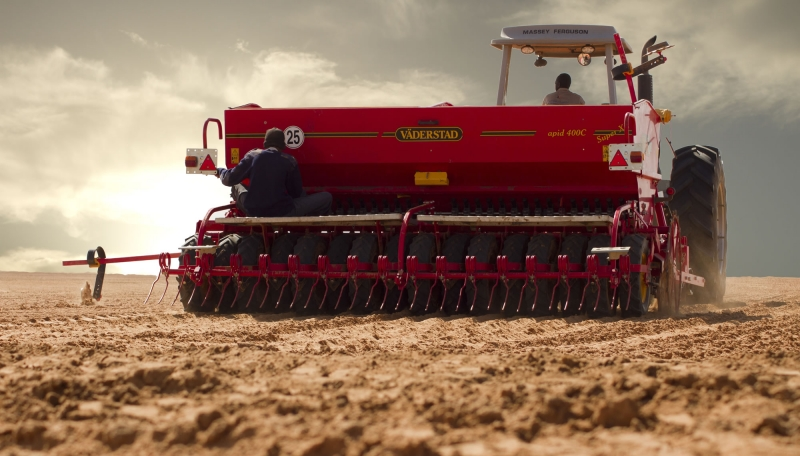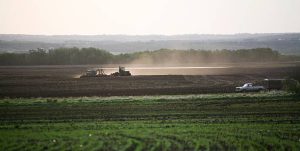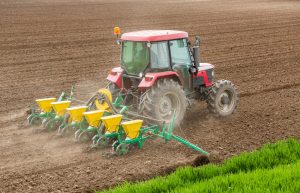The agricultural landscape has undergone significant transformations throughout history, and one invention that played a pivotal role in revolutionizing farming practices is the seed drill. In this article, we will delve into the historical context, mechanics, and the profound impact of the seed drill on agriculture.
I. Before the Drill:
Imagine fields tilled by hand, seeds scattered like confetti on the wind. This was agriculture before the seed drill, a time of backbreaking labor and unpredictable yields. Manual seeding, though ingrained in tradition, was inefficient and wasteful. Seeds landed erratically, competing for resources, and often failing to take root. This limited both productivity and potential.
II. Emergence of a Revolutionary Tool:
The tide turned in the 2nd century BCE, with the first whispers of a transformative invention: the seed drill. Ancient China birthed this marvel, sowing seeds not by chance, but with precision. Early prototypes, made of wood and bamboo, hinted at the potential to change the very face of agriculture. Enterprising minds like Camillo Torello in 16th century Italy refined the design, paving the way for a future where sowing became an orchestrated ballet.
III. Jethro Tull: Sowing the Seeds of Innovation:
In 1701, Jethro Tull, a visionary English inventor, stepped onto the stage. He meticulously studied plant growth and recognized the limitations of manual sowing. His revolutionary seed drill, with its innovative hopper, metering mechanism, and furrow openers, transformed the industry. Seeds were now placed at optimal depths and spacings, maximizing their chances of flourishing.
IV. A New Dawn for Agriculture:
The advantages of the seed drill were undeniable:
- Efficiency: Compared to the scatter-and-pray approach, the drill saved seeds, reducing wastage and speeding up the planting process.
- Optimal Spacing: Seeds, no longer competing for resources, grew stronger and healthier, leading to improved crop yields.
- Uniform Depth: Precise placement ensured better germination rates, boosting harvests further.
V. Precision Takes Root:
The seed drill wasn’t just about speed; it was about control. Seeds found their ideal homes in the soil, at the perfect depth for germination and access to nutrients. This meticulous placement yielded a tapestry of uniform seedlings, maximizing their potential for growth.
VI. Revolutionizing Productivity:
The seed drill wasn’t just a tool; it was a revolution. Crops flourished, yields skyrocketed, and farmers could cultivate larger areas with less effort. This newfound efficiency spurred further agricultural advancements, ushering in an era of abundance.
VII. Beyond Profits: Environmental Impact:
The benefits extended beyond profits. Reduced seed wastage and precise placement minimized soil erosion and conserved precious resources. This environmental consciousness, born from the seed drill’s precision, laid the foundation for sustainable farming practices.
VIII. Rotation: A Natural Cycle:
The seed drill’s ability to plant different crops with precision encouraged farmers to adopt crop rotation practices. This diversified the soil nutrient profile, improved land health, and further boosted yields, creating a virtuous cycle of sustainability.
IX. From Wood to Metal: A Journey of Evolution:
The seed drill wasn’t an invention built in stone. Over centuries, it evolved. Wood gave way to iron, gears to hydraulics, and manual adjustments to computerized controls. Every advancement refined its precision, increasing its impact on agricultural outcomes.
X. A Catalyst for Change:
The seed drill wasn’t just a tool; it was a catalyst for the Agricultural Revolution. It transformed farming from a gamble to a science, enabling farmers to plan, strategize, and maximize their harvests. Its influence spread across continents, changing agricultural practices worldwide.
XI. Challenges and Refinements:
Early seed drills weren’t without their limitations. They were often bulky, expensive, and required skilled operators. But with each new iteration, these challenges were tackled. Lighter materials, improved designs, and user-friendly interfaces made the seed drill accessible to a wider range of farmers, accelerating its global impact.
XII. A Legacy Enduring:
The seed drill’s legacy lives on in every field it graces. Its precision forms the backbone of modern agriculture, guiding crops to reach their full potential. From humble beginnings to sophisticated models, its impact on food production remains undeniable.
XIII. Conclusion:
The Seed Drill’s story is one of human ingenuity, environmental awareness, and a relentless pursuit of efficiency. It sowed the seeds of change, literally and figuratively, shaping the very landscape of agriculture. Its legacy is etched in every bushel of grain, every ear of corn, a testament to the transformative power of a single, well-placed seed.
In conclusion, the seed drill stands as a transformative invention that revolutionized agriculture, offering solutions to age-old challenges. From its historical roots to modern adaptations, the seed drill’s impact on efficiency, economics, and sustainability is undeniable.
Frequently Asked Questions (FAQs)
- What is the significance of the seed drill in agriculture?
- The seed drill revolutionized agriculture by providing a mechanized and efficient method for sowing seeds, leading to increased crop yields.
- How did the seed drill contribute to resource conservation?
- By enabling precise seed placement and reducing wastage, the seed drill contributed to the conservation of seeds and other resources in farming.
- Were there any criticisms of the seed drill when it was first introduced?
- Yes, there was initial resistance from traditionalists who were skeptical about adopting new agricultural technologies like the seed drill.
- How has the seed drill evolved in the modern era?
- Modern seed drills incorporate advanced technologies such as GPS-guided precision farming, contributing to sustainable and smart agriculture practices.
- What role does the seed drill play in agricultural education?
- The seed drill is a fundamental aspect of agricultural education, serving as a practical tool for training aspiring farmers in efficient seed-sowing techniques.




